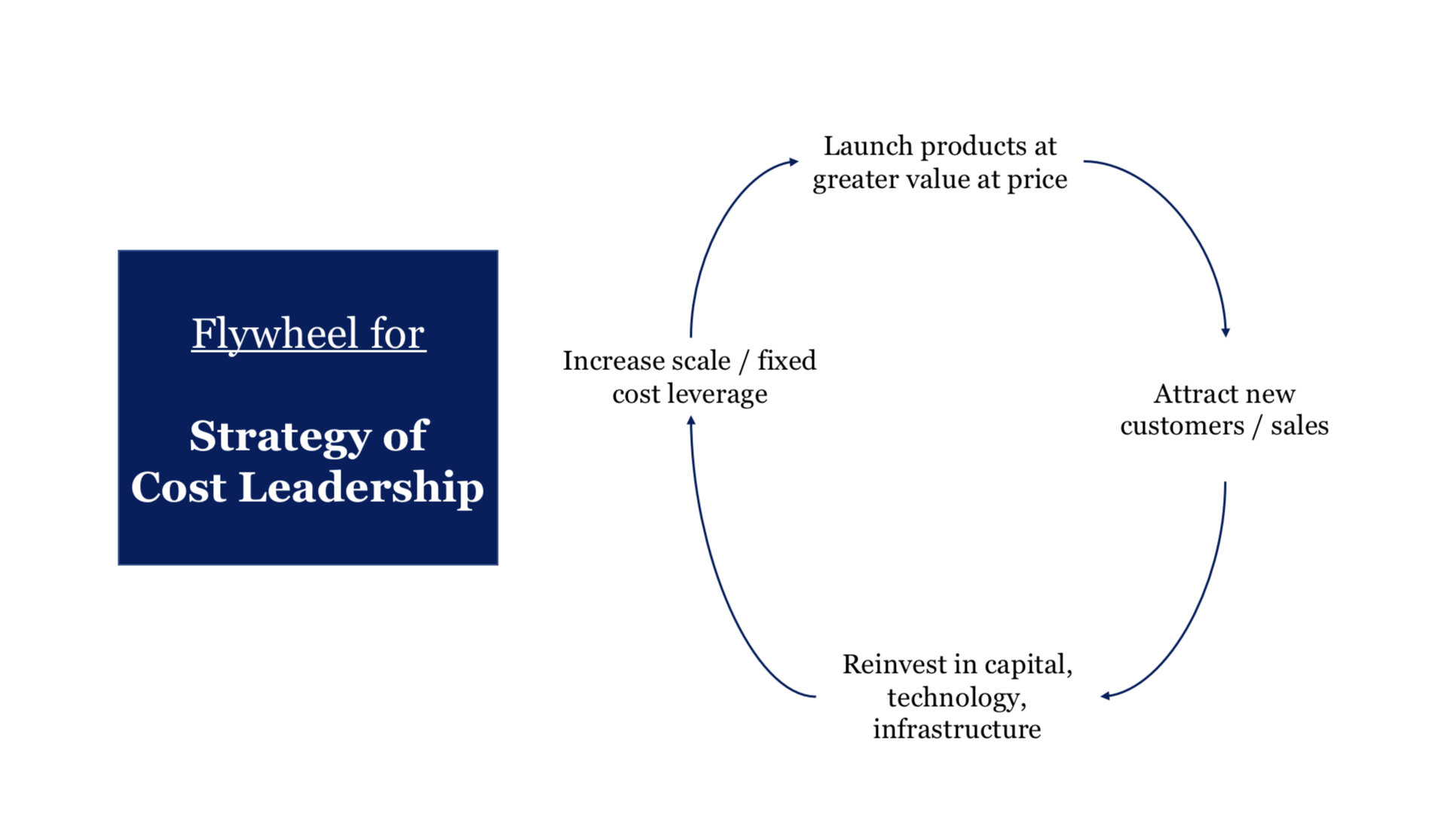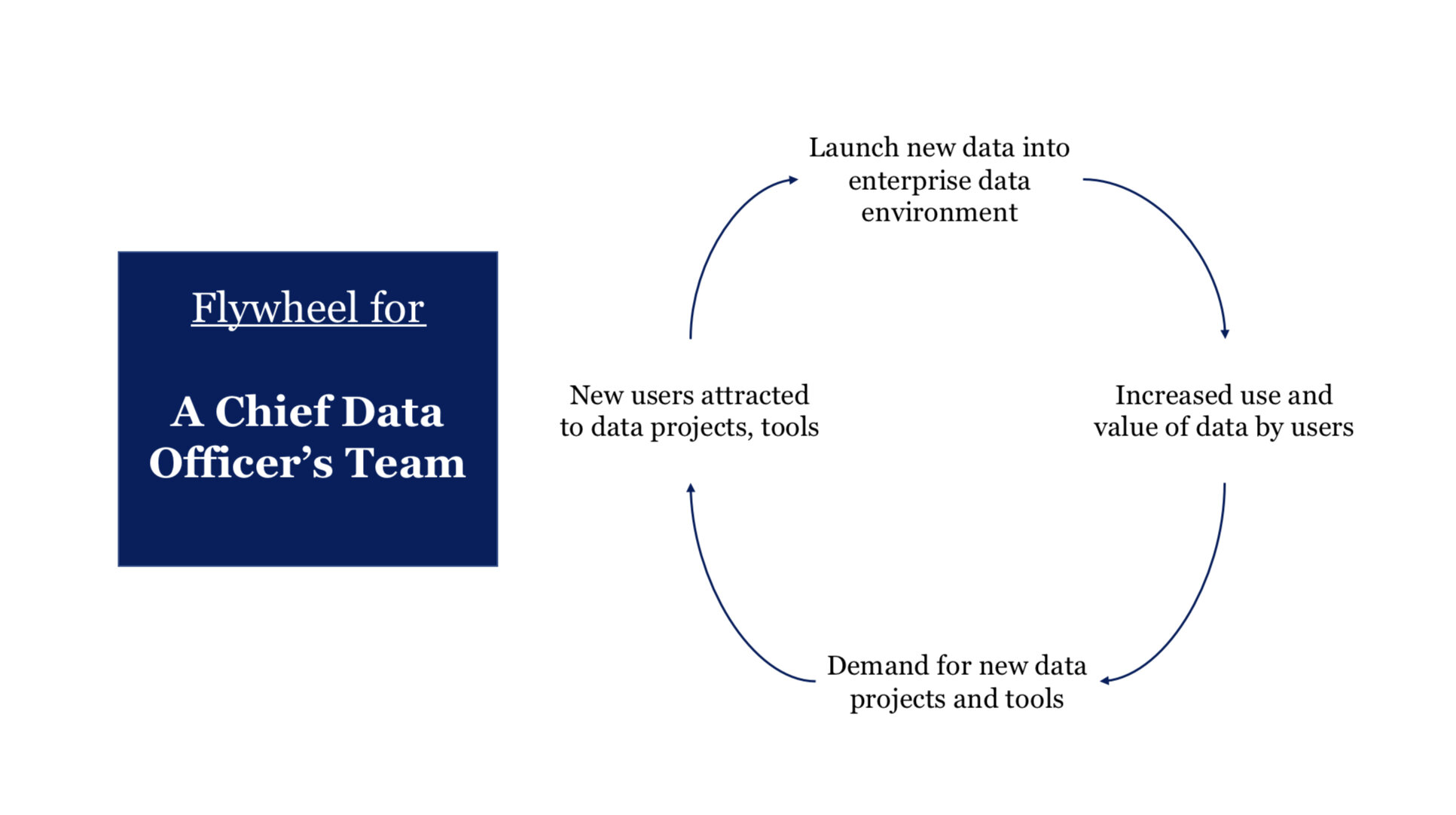The Power of Thinking in Flywheels
There are two types of growth, generally speaking - linear growth and exponential growth. And I’m not just talking about for a corporation, but for teams, culture, families, and ourselves as individuals.
The problem with linear growth is diminishing marginal returns - once your market is saturated you have to spend more and more to get less and less. The problem with exponential growth is that it’s hard and also doesn’t last indefinitely. (Sustaining exponential growth is a topic for a different day.)
Jim Collins developed an interesting concept to make exponential growth less hard, which I find brilliant - the flywheel effect. Flywheels are basically a way of thinking about a feedback loop, deliberately. He explains it well in this podcast interview with Shane Parrish on the Knowledge Project. Some of the key takeaways for me were:
The goal of a leader is to remove friction from the flywheel, because once you get it turning, it builds momentum and starts moving faster and faster.
Each step of the flywheel has to be inevitable outcome of the previous step. Think: “If Step 1 happens, then Step 2 will naturally occur”
The key to harnessing flywheels aren’t a silver bullet or Big Bang initiative, it’s a deliberate process of understanding what creates value and building momentum - slowly at first, but then accelerating. To the outside it’s an overnight breakthrough, but to the inside it was a disciplined, iterative process to understand the flywheel, and reducing friction to get it cranking
I was introduced to this concept when I read Good to Great years ago, and was reintroduced to it before the Covid pandemic. Only recently has it started to click.
I’ve found flywheels to be a transformative way of thinking, both at work and in my real life. Here are a few examples of flywheels I’ve experienced and experimented with.
Most business types will be familiar with strategies of differentiation or cost leadership. Both are powerful, value-creating flywheels:
Flywheels are even helpful at the business-unit level. This is an example of how a Chief Data Officer might think about how to create a data-centric culture within their organization.
When experimenting with flywheel thinking, it turns out Robyn and I have been operating a flywheel of sorts within our marriage, and temperature check has been a big part of that.
This is also a good example of how flywheels need to be specific to the stakeholders involved in them. This flywheel doesn’t work for every marriage. Among just our friends, I’ve seen flywheels that are organized around faith or civic engagement.
Gun violence is an interesting example of flywheel thinking because it helps illustrate how particularly complex domains can have multiple flywheels intertwined within them. These are just two dynamics I observed when working on violence prevention initiatives.
Each flywheel has different stakeholders and explain different categories of violence: at the left it’s more about influencing perpetrators making a “business decision” to shoot, at right it’s more about influencing members of trauma-afflicted communities that tend to have simple arguments end with gunfire, usually unintentionally and without pretense.
How we manage and coach is also a classic example of a feedback loop that operates like a flywheel. It’s simplicity doesn’t make it any less powerful, or easy to do in practice.
We also have flywheels that explain our behavior as individuals. For me, this is how I specifically respond well to improve my physical fitness.
My flywheel really took off when I understood and started measuring my BMI, Body Fat%, Sleep, Blood Pressure etc. I happen to love the products from Withings because they made the flywheel much more transparent to me as it was occurring, which led to rapid and permanent changes in my behavior.
Social movements utilizing nonviolence techniques (i.e., think US Civil Rights Movement, India Independence) also seem to fit the concept, showing the breadth of flywheel thinking’s explanatory power.
Going through this exercise of identifying flywheels in a number of domains I’m familiar with, I’d offer this practical advice for articulating flywheels in your world:
Think about what is valuable to each involved party. At its core, flywheel thinking is rooted in an understanding of what drives value for everyone. What are the things that if increased or decreased would create win-wins for everyone involved? If the flywheel doesn’t encompass value creation for everyone involved, it’s probably not quite right. Zero-sum flywheels, which create winners and losers between the flywheel’s stakeholders aren’t sustainable because someone will end up trying to sabotage it.
Mind magical thinking. The beauty of the flywheel is that each step in the process is a naturally occurring inevitability of the previous step. Which means as a flywheel detectives we have to be honest about how the world really works; the flywheel has to reflect what the parties involved will actually do in real life and what they’re actually motivated by.
Identify agglomeration. In every flywheel there’s a step where some sort of resource accumulates, and that resource is one where it’s value and impact increases exponentially the more you have of it. That resource could even be things that aren’t technologies or infrastructure (cost leadership example), like data (chief data officer example), knowledge (managing / coaching example), or moral standing (social movement example).
I didn’t use an example with a network effect, but the same idea applies. These agglomerations are all critical resources to the exponential growth unlocked by the flywheel, so if you’re not seeing evidence of that sort of resource agglomeration, the flywheel is probably not quite right.
Identify interactive feedback points. Additionally, there seems to be a step in each flywheel where there is feedback or a learning interaction between the stakeholders participating in the flywheel. Maybe it’s learning about the customer (differentiation strategy example), or maybe it’s response to a measurement (physical fitness example). If there’s not interactive feedback happening, the flywheel is probably not quite right.
I wanted to share this post because applying flywheel thinking is a huge unlock for value creation. It helps, me at least, to get beyond linear thinking and operate at a higher level of effectiveness and purpose.
I get especially excited by how this thinking can apply across disciplines. Jim Collins, who pioneered the concept, is a business guru. But the concept applies broadly, and far beyond what I even suggested - I can imagine it being used to inform feedback loops influencing decarbonization, community development, or regional talent clustering and entrepreneurship.
But flywheel thinking can also be used for nefarious purposes. Rent-seeking and political corruption feedback loops are good examples of this. Specifically, a flywheel like this quickly comes to mind:
My bet is that the sort of people who know me and read my writing are disproportionally good people. By sharing this learning I’ve had, I suppose it’s me trying to do my part create a feedback loop for a community of practice that uses flywheel thinking to make the world a better place.
If you enjoyed this post, you'll probably like my new book - Character By Choice: Letters on Goodness, Courage, and Becoming Better on Purpose. For more details, visit https://www.neiltambe.com/CharacterByChoice.









